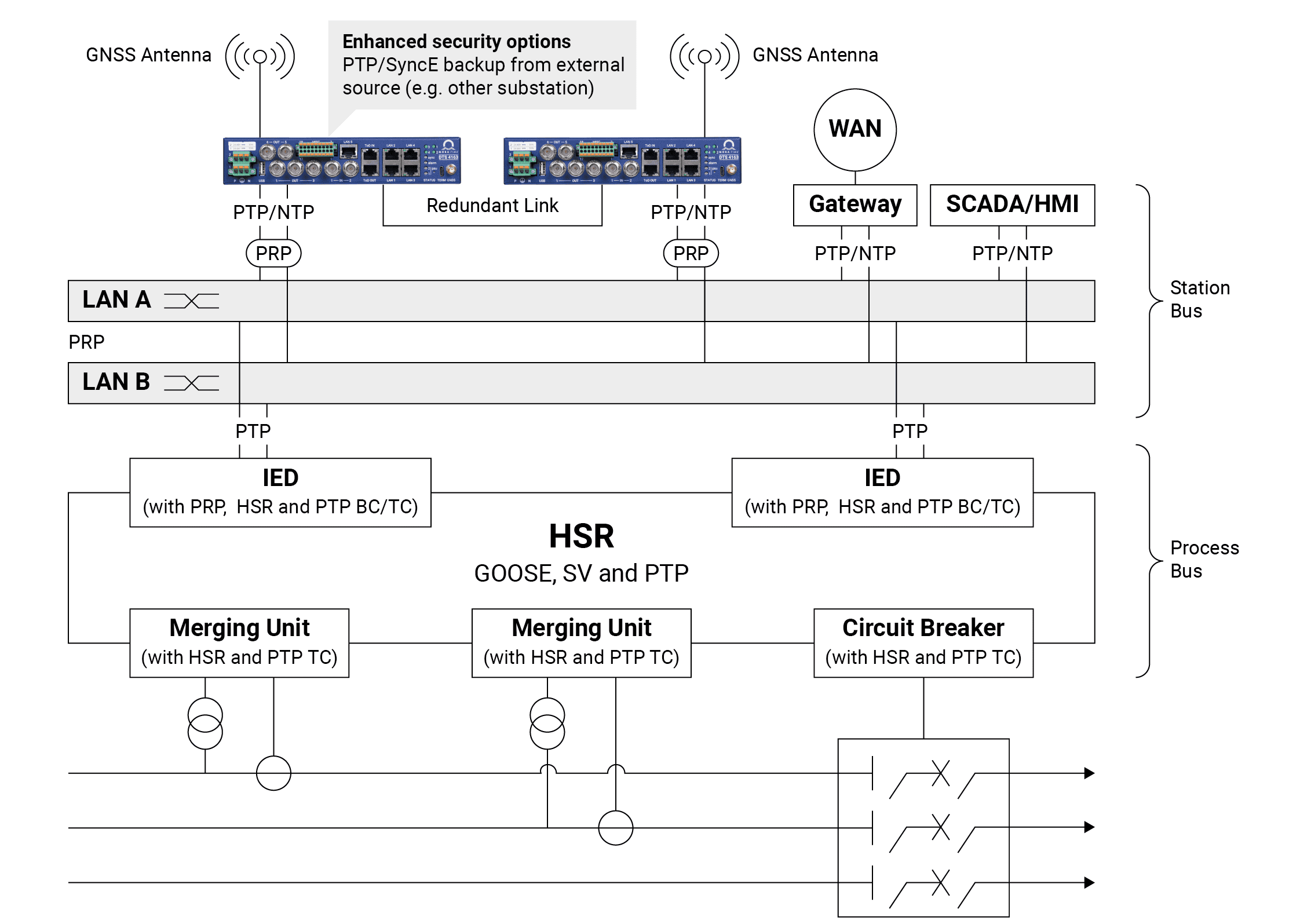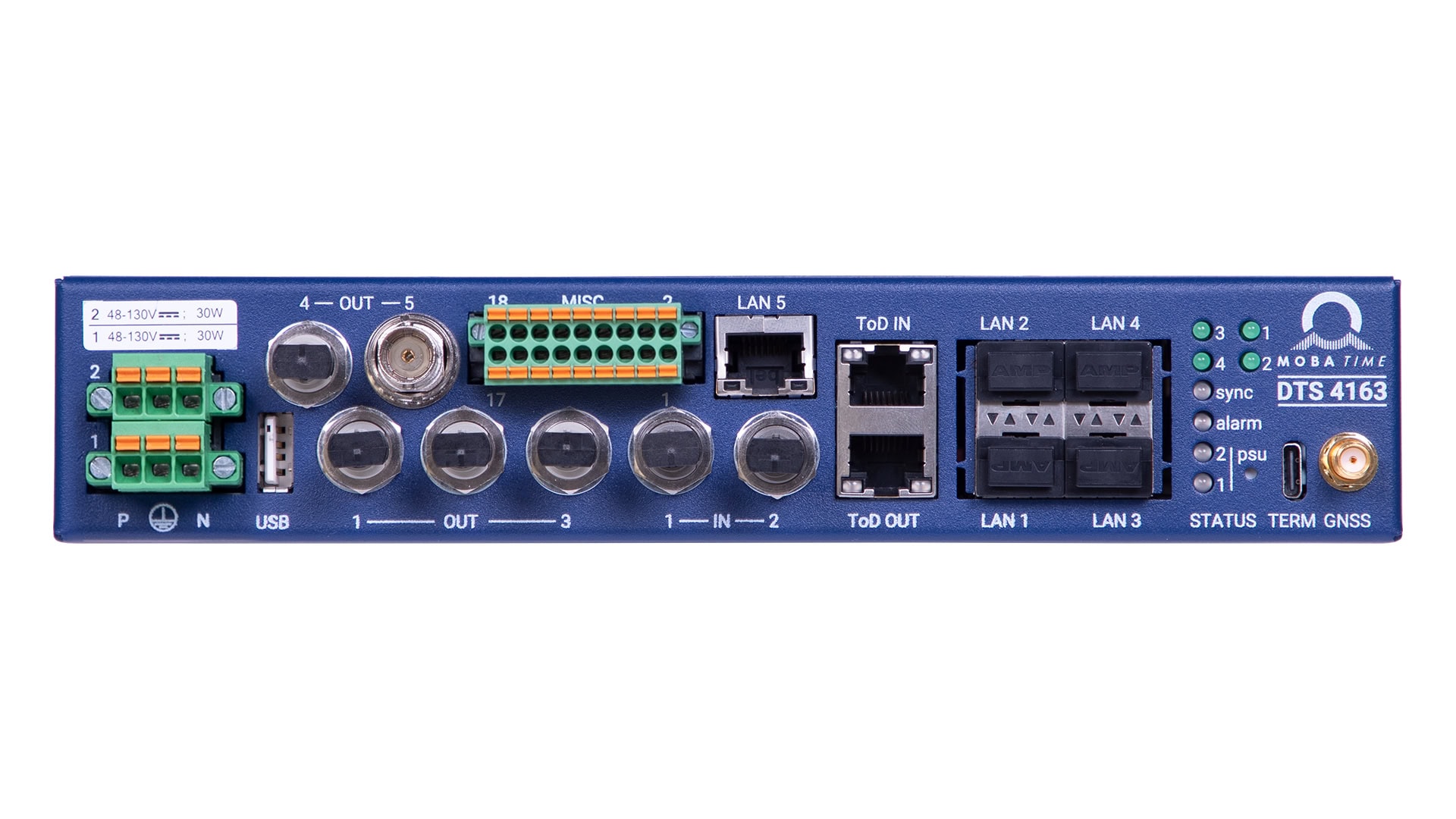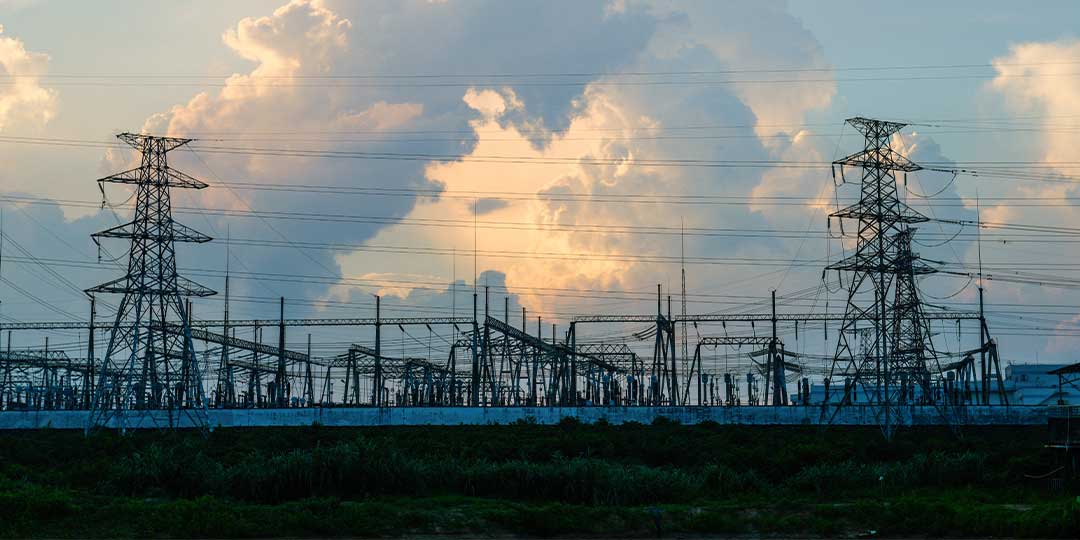PRP vs. HSR: Choosing the Right Redundancy Protocol for Your Substation Network
In the age of digital substations and mission-critical infrastructure, network reliability is no longer a luxury—it’s an operational necessity. Unplanned downtime can lead to costly disruptions, safety risks, and even cascading grid failures. That’s why choosing the right network redundancy mechanism is one of the most strategic decisions engineers and network architects must take when designing time-sensitive systems.
Two key technologies stand out in this domain: PRP (Parallel Redundancy Protocol) and HSR (High-availability Seamless Redundancy)—both standardized under IEC 62439-3. While both aim for zero recovery time, their architectures, costs, and ideal use cases differ. This article explains both in depth and introduces a new generation of time servers designed with these technologies in mind.
Why Redundancy Matters in Substation Networks
In modern IEC 61850-based substations, the communication infrastructure underpins protection, control, and monitoring systems. Any interruption in the flow of operation critical data packets - like sampled values or GOOSE messages - can compromise the integrity of the entire system. That’s where seamless redundancy becomes crucial.
Unlike conventional redundancy methods that introduce recovery delays when failover happens, PRP and HSR are zero-time recovery technologies. They ensure data delivery even when part of the network fails - without buffering, re-routing, or re-transmission.

Parallel Redundancy Protocol (PRP)
PRP is based on the idea of two separate, independent Ethernet networks (LAN A and LAN B), usually laid out in star topology. Every data frame is duplicated and transmitted simultaneously across both LANs. The destination device receives both frames, accepts the first, and discards the duplicate.
Advantages of PRP:
- Zero switchover time (seamless redundancy)
- Complete physical separation of communication paths
- Compatibility with non-PRP devices through RedBoxes or single connections to one LAN
- Mature ecosystem for utilities and transmission system operators
- Scalability – PRP scales in the same way as regular LAN networks
Disadvantages of PRP:
- Requires double cabling and network infrastructure
- Higher upfront costs due to dual LAN architecture
PRP is an excellent fit for station bus level networks in large-scale substations, centralized control environments, or applications that already have or require redundant networks.

High-availability Seamless Redundancy (HSR)
In contrast, HSR uses a ring topology, where each node sends duplicate frames in both directions around the ring. When one path fails, the other ensures uninterrupted delivery. Unlike PRP, HSR operates on a single LAN, making it attractive for compact or cost-sensitive installations.
Advantages of HSR:
- Zero recovery time
- Fewer switches and cables required (single-LAN approach)
- No network switches required
- Especially suited for edge devices and compact substations
Disadvantages of HSR:
- The weakest link in the chain (the ring) defines the strength of the chain (performance of the entire ring).
- Not scalable
HSR is commonly used in pure process bus applications at distribution substations, compact substations, and real-time industrial automation, where simplicity, low cost, and reliability are equally critical and scalability is not an issue
Real-World Use Case: When to Choose PRP vs. HSR
- You should choose PRP if...
- You require physical isolation between two networks
- Your system needs to scale
- …such as large substation with ample rack space
- You should choose HSR if...
- You need a cost-effective way to maintain high availability
- You’re designing a compact network with few nodes
In hybrid environments, many operators deploy PRP at the station bus (control level) and HSR at the process bus (bay level)—maximizing the strengths of both protocols.
The Mobatime DTS 4163.grandmaster: Redundancy Without Compromise

Few devices in the time server market support both PRP and HSR natively. The DTS 4163.grandmaster from MOBATIME changes that.
Designed for high-availability applications, the DTS 4163.grandmaster comes with built-in hardware support for both PRP and HSR—giving system integrators and operators the flexibility to match any network topology without needing external redundancy boxes.
Key features of the DTS 4163.grandmaster:
- Native PRP & HSR support for IEC 62439-3 compliance
- PTP Grandmaster (IEEE 1588-2019) with hardware timestamping and NTP server
- Designed for IEC 61850 substation automation
- Dual power supplies and redundant network interfaces
- Easy integration into both brownfield and greenfield networks
- 4 PTP capable network ports for either use as client or server
This level of built-in flexibility makes the DTS 4163.grandmaster a compelling choice for, energy, power grid and railway operators.
Future-Proof Your Infrastructure
The ability to support both PRP and HSR is no longer a niche capability—it’s a marker of future-ready infrastructure. The DTS 4163.grandmaster allows you to evolve your network without rethinking your time distribution.
Whether you're upgrading an aging system or building a new one, redundancy should be built in—not bolted on. Visit the DTS 4163.grandmaster product page to explore detailed specifications.
